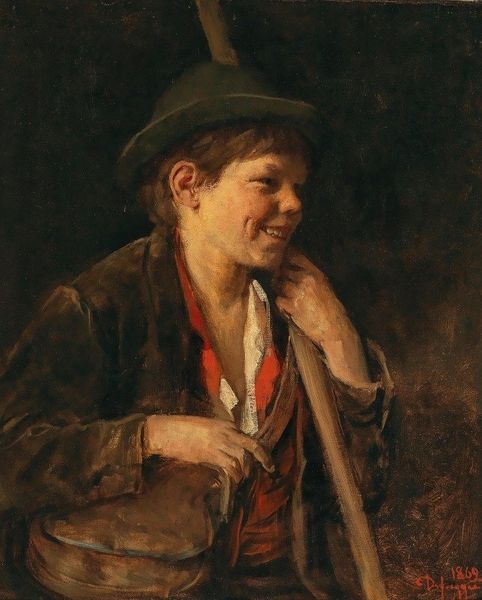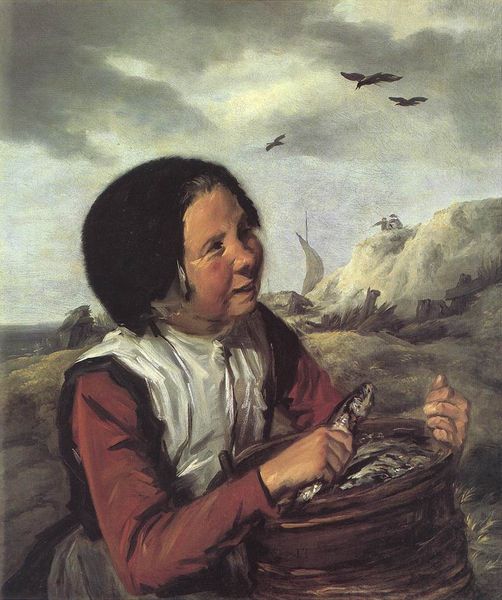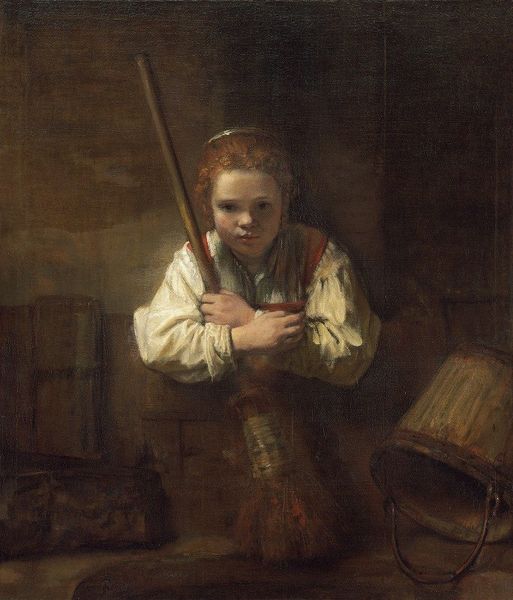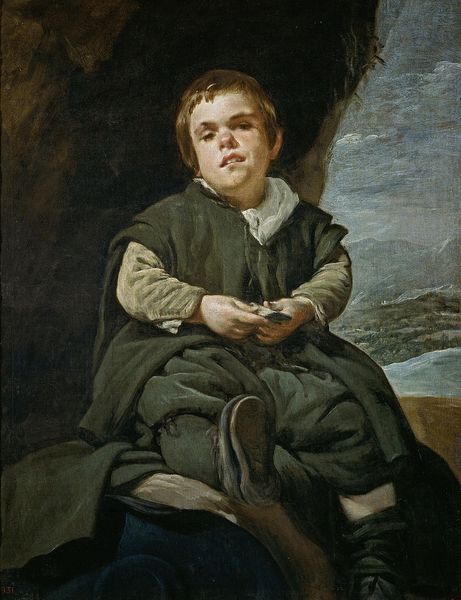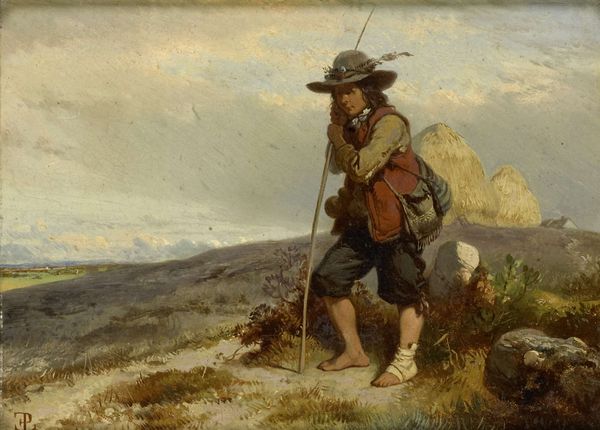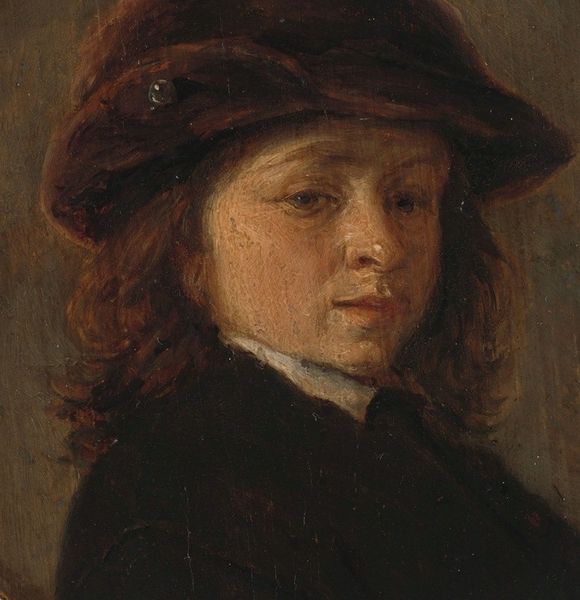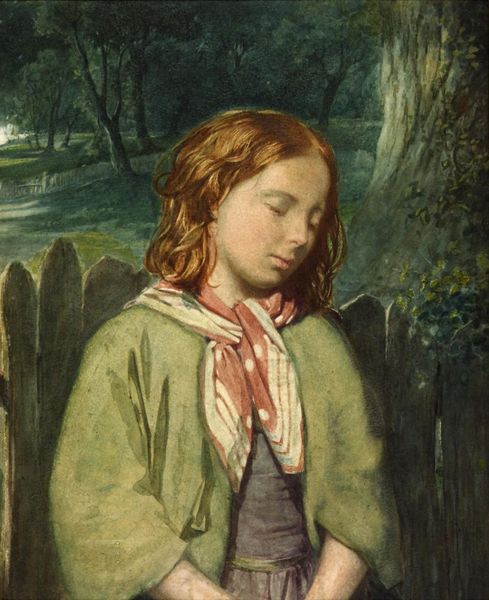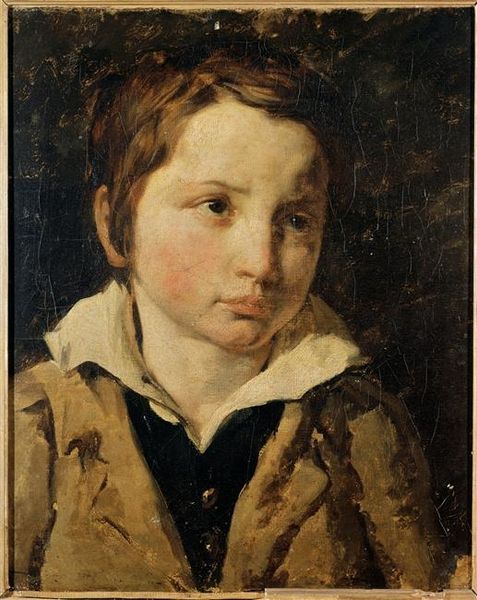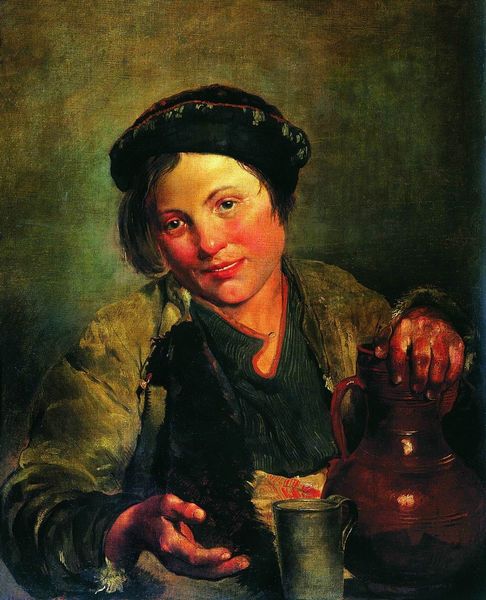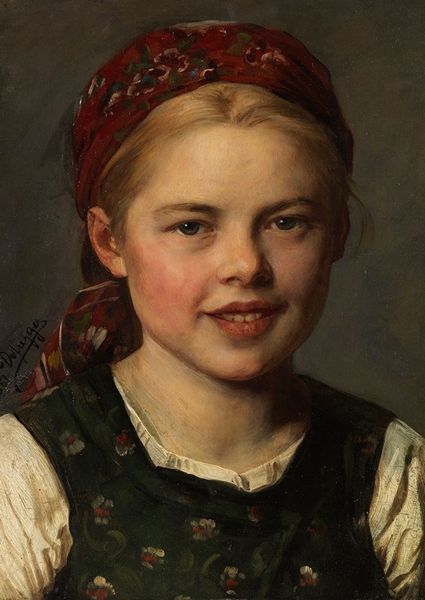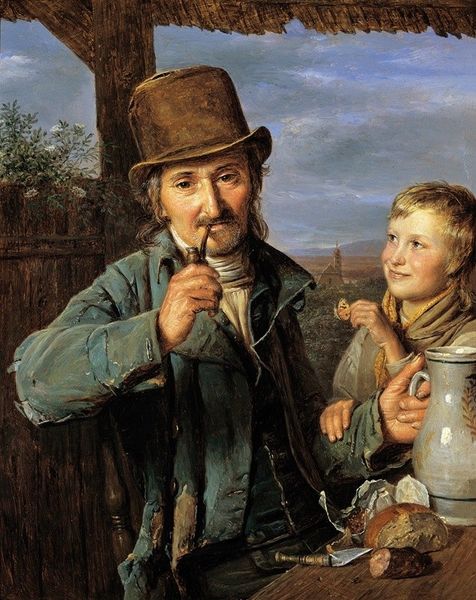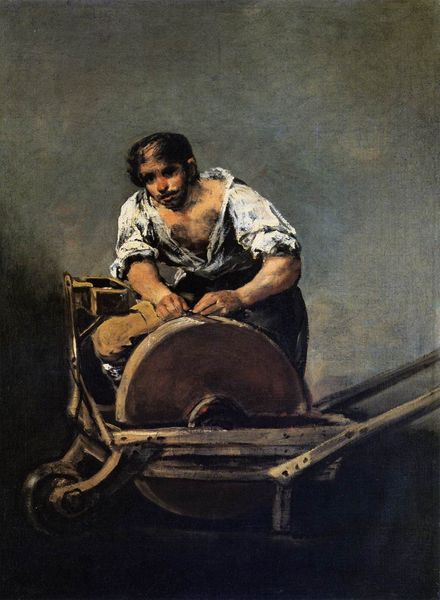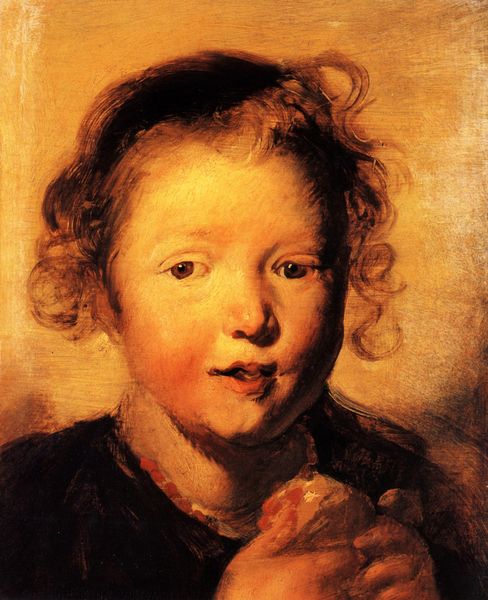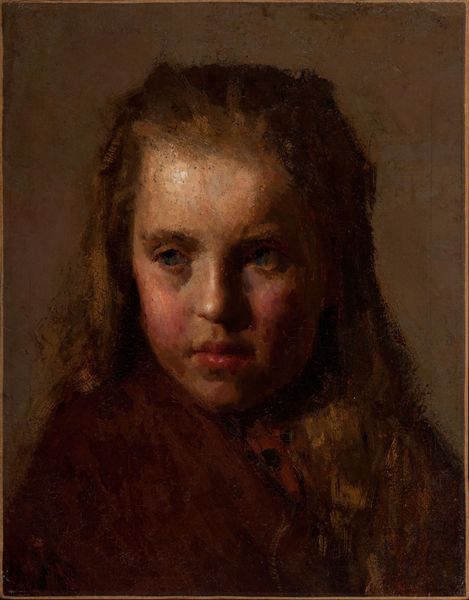
painting, oil-paint
#
portrait
#
baroque
#
dutch-golden-age
#
painting
#
oil-paint
#
figuration
#
child
#
genre-painting
#
realism
Dimensions: 74 x 61 cm
Copyright: Public domain
Curator: This is Frans Hals’s, *Fisher Boy*, painted around 1630. It's currently hanging here in the Royal Museum of Fine Arts Antwerp. What strikes you about this artwork? Editor: The first thing I notice is the light and the shadow – it makes the boy appear both vulnerable and mischievous. There is a rawness to the boy's expression, like he's been caught mid-thought, and the dark smudges across his face suggest a hardiness. Curator: Indeed. The seemingly simple portrayal of a young boy carries deeper connotations, particularly if we look at the societal hierarchies in 17th-century Netherlands. Children of working classes were rarely given such individualised, respectful attention in art. The painting normalizes him as a subject of equal attention, challenging, in a sense, classist notions of visual representation at the time. Editor: I agree, Hals certainly captured a democratization of the gaze through a mastery of painterly skills. Consider the loose brushwork. It doesn’t idolize him, but shows an intimate familiarity. How does it relate to how ordinary people wanted to see themselves at the time? Curator: In contrast to idealized Baroque portraiture, Hals captured an immediacy of experience, connecting his patrons to a broader Dutch reality. Hals elevated "ordinary" individuals, such as the fisher boy, and therefore these portrayals become incredibly charged and deeply relevant to our understanding of identity and labor, which in this painting seem very visibly articulated together. Editor: Yes, I suppose this genre-defining informality was embraced in response to an increasingly capitalist market that gave rise to different demands on the artists, so they created artwork in ways to signal they saw these patrons and everyday people. His use of light doesn't flatten the class dynamic, either. Curator: Ultimately, Hals’ work shows how portraits can simultaneously reproduce existing power structures but also create visual moments of inclusivity, providing nuanced representations of children who work for their families' economic survival. Editor: Looking closely, I now see *Fisher Boy* less as just an individual portrayal, but rather as an intentional representation, of Dutch identity itself at a fascinating time in its cultural history.
Comments
No comments
Be the first to comment and join the conversation on the ultimate creative platform.
